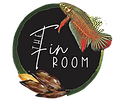| Synonyms | Badis buchanani, Cychla fasciata, Labrus badis, L. fasciata |
| Distribution | Bangladesh, Bhutan, India, Nepal, and Pakistan. |
| Maximum Size | 5cm (2") |
| Temperature | 15-25°C |
| Water Parameters | Will acclimatise to a wide range of conditions. pH: 6.0-7.8, dH: up to 18 degrees. |
| Compatibility | Specialist community |
| Lighting | Dim (brighter lighting can be diffused with plants). |
| Sexual Dimorphism | Mature males are larger, much more colourful, and develop extended anal, dorsal, and pelvic fins. Females smaller and less brightly coloured. |
| Feeding | Frozen and live foods |
Description
Care
The Chameleon Fish has a fairly widespread distribution throughout much of South Asia, where it is most commonly found in heavily vegetated ditches, ponds, slow-flowing streams, and swamps. These diminutive badids are an ideal choice for small, heavily planted aquaria and have been in the aquarium hobby for more than a century. Their tank must be mature and have myriad of hiding places amongst driftwood and thick vegetation, which should include floating species to help diffuse the light. Indian Almond Leaves (Terminalia catappa) are also very much appreciated as 'leaf litter', but these must be replaced on a regular basis as they gradually decompose. Filtration should be good but water movement gentle. Chameleon Fish should be maintained in pairs, or in a harem situation with one male and several females. Rival males can be rather aggressive towards one another in small aquaria. However, if the tank is more spacious (and heavily planted as detailed above) then it may be possible to keep more than one male, as there should be ample visual barriers and room for each male to establish his own territory. Tankmates, if desired, should be of similar size and of a peaceful nature, as well as tolerant of the lower temperatures this species prefers. Much attention must be paid to water quality since Chameleon Fish are somewhat delicate and do not tolerate elevated nitrates or swings in water chemistry. Acclimatise very carefully. This species is known as the Chameleon Fish due to its ability to change colour rapidly: when breeding, when wanting to blend into its surroundings, or when stressed. May also be seen on sale as the Badis, Blue Perch, or Dwarf Chameleonfish.
Feeding
Small live or frozen foods such as baby brineshrimp (Artemia nauplii), cyclops, daphnia, and mini-bloodworm (sparingly). Some specimens may take crushed flake and micropellets, but this is not guaranteed.
Breeding
Cave spawner which has been bred in the home aquarium. The male will set up a territory around a cave and begin a courtship display, showing off his beautiful intensified colours to the females. If a female is receptive, she will deposit 30-100 eggs in the cave. The male immediately fertilises the eggs and then drives away the female, caring for the eggs himself. The eggs should hatch within 2-3 days, but it may be up to a week before the fry have finished absorbing their yolk sacs and become free-swimming. The fry are very small and can be offered baby brineshrimp (Artemia nauplii) or microworm. The adult fish will predate on the fry, although some should make it to adulthood in densely planted set-ups. However, if you wish to raise a larger number of young, it would be prudent to move the adults to another tank once the eggs have been deposited/fertilised.



















